Migmatitic Ovejeria Granite with Garnet Neosomes:
This is a granite associated with the Famatinian Orogeny (~470Ma, age
determined for other granites and migmatites in the region, Buttner et al. 2005).
The Famatinian was the last major thermal event in the region and there is no evidence of another thermal peak after that (Buttner et al. 2005).
In the field, the Ovejeria granite grades into diatexites, with
many schollen of disrupted psammitic migmatite with garnet in leucosomes. In places, the Ovejeria granite inherits centimetric garnets from
the source (found heterogeneously distributed
in the granite and generally these are found in outcrops with psammite schollen containing similar garnets).
These relations lead us to think that psammites were the source of the magma and that Bt-dehydration produced the melt plus peritectic garnets.
Looking more closely, we found that the Ovejeria Granite has regions where it is migmatitic, with Garnet-bearing neosomes such as
depicted in the photos below (Fig. 2).
So, it looks as if we have an anatectic granite, that has undergone remelting. If so, are we looking at the recycling of magmatic rocks within
one and the same tectonothermal event (Famatinian)? These then raises questions about the thermal history of these rocks, and heat sources
but first we need to determine precisely the timing of granite formation and its remelting. These features also raise questions about the
melting reactions and the number of melting events
undergone by the psammites. Did the psammites undergo two separate Bt-dehydration melting events? We have not been able to recognize evidence
for this in the field. Could it be cryptic?
With regards to the relative timing of deformation and melting, we see in Fig. 4 from Puesto Quebrada, that psammites have undergone melting
during deformation to produce garnet-bearing leucosomes.
This deformation is the same that is recorded in the migmatitic Ovejeria granites shown in Fig. 2 and consists of thrusting to the W along a transport
direction towards ~280 as recorded by stretching lineations plunging dominantly towards 100). I interprete the features to indicate that the migmatization of the psammites and the Ovejeria
granite are contemporaneous with thrusting to the West. We have therefore no evidence for an earlier melting event of the psammites that could have
produced the granite.
Are there other reasonable interpretations for these features?
Ovejeria granite: general features. Heterogeneous granite with disrupted psammite schollen and heterogeneously distributed clast of large pegmatitic K-feldspars
and centimetric garnet (interpreted as inherited from the source). In some outcrops there are more homogeneously distributed small 1-3mm garnet grains
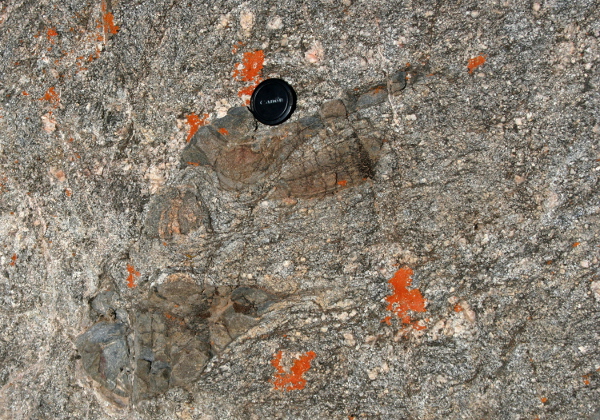
Fig. 1a. Ovejeria granite: heterogeneous, with psammite schollen and clasts of disrupted pegmatite. SQ326 south of Ovejeria. |
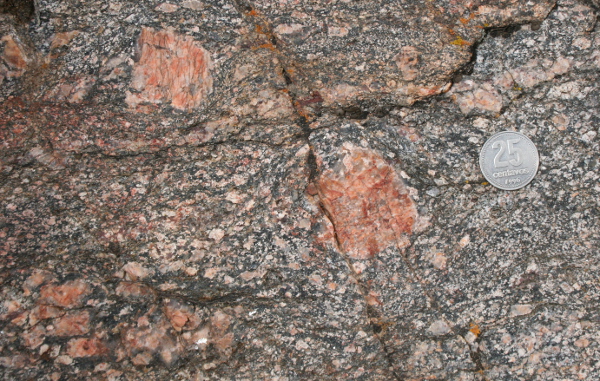
Fig. 1b. Ovejeria granite: clasts of disrupted pegmatite. SQ340 towards Puesto Salado from Ovejeria.
|
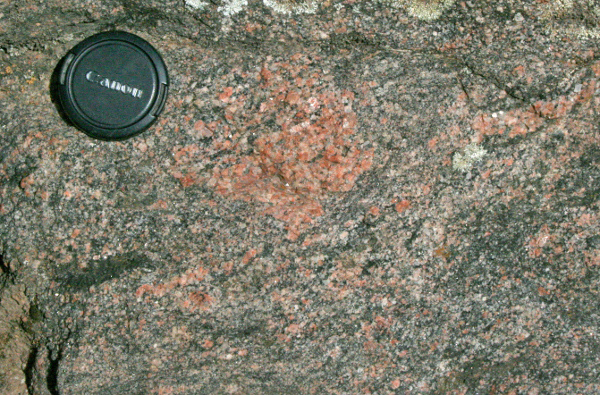
Fig. 1c. Ovejeria granite: heterogeneous, with blocks of disrupted granite with red K-feldspar and a Bt clot. SQ291 on Rio La Bolsa towards Puesto Tapado. |
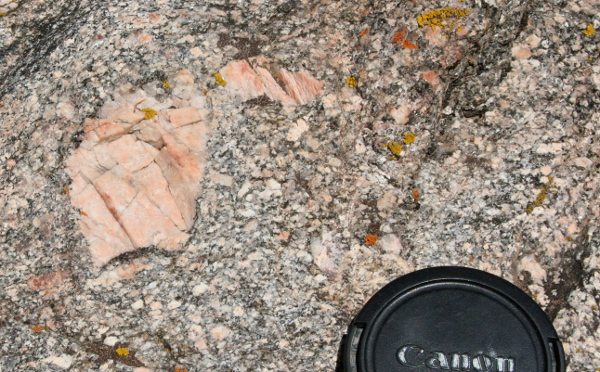
Fig. 1d. Ovejeria granite: clasts of disrupted pegmatite. SQ326 south of Ovejeria.
|
Anatectic version of the Ovejeria Granite: garnet-bearing neosomes. Features do not allow a clear determination of the timing of melting in relation
to deformation: syn- or pre-kinematic anatexis are possible interpretations. Deformation recorded are typically thrust to West
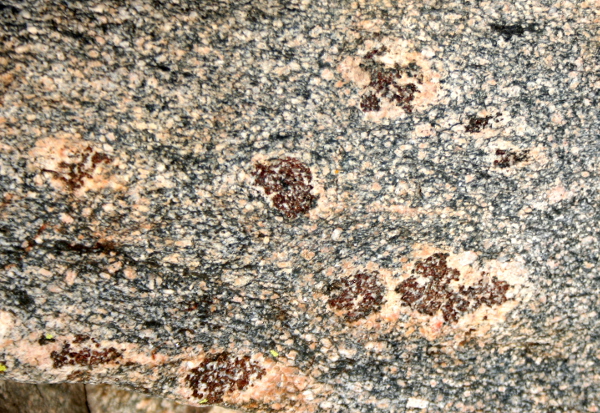
Fig. 2a. Garnet neosome in Ovejeria granite. A granite which commonly borders on diatexite with numerous partly
assimilated schollen of psmammite source and disrupted pegmatites, previously part of the melt source (intruded into the psammites). SQ301 Puesto Tapado: block.
|
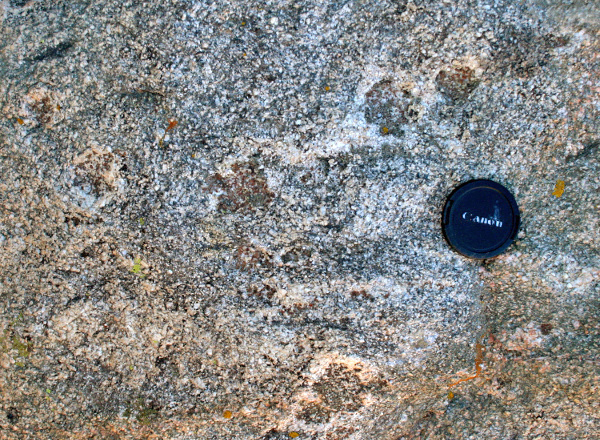
Fig. 2b. Garnet neosome in Ovejeria granite. Notice asymmetric shape of leucosomes indicative of
shearing. SQ301 Puesto Tapado: block.
|
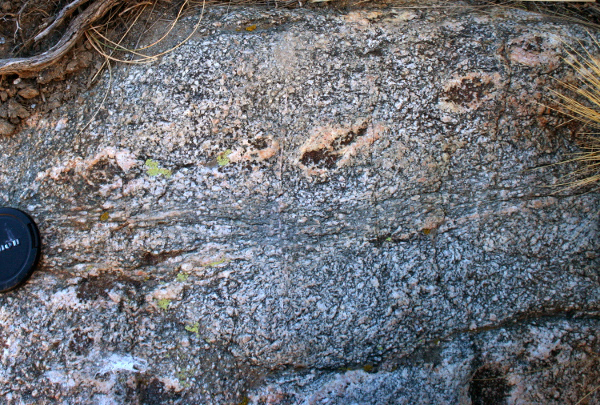
Fig. 2c. Garnet leucosome in Ovejeria granite. Notice asymmetric shape of leucosomes indicative of
shearing and the shear zone through the centre of the photograph. SQ301 Puesto Tapado: block.
|
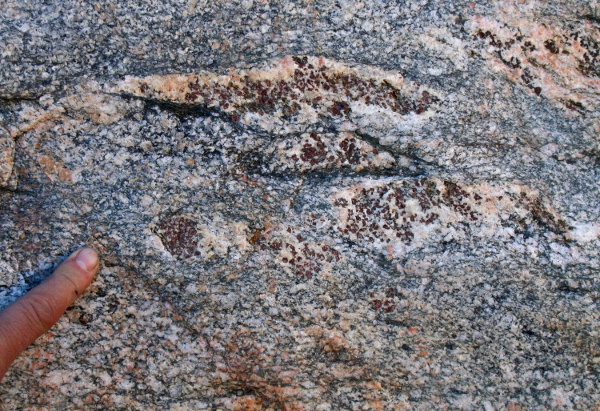
Fig. 2d. Garnet neosome in Ovejeria granite. SQ301 Puesto Tapado: block.
|
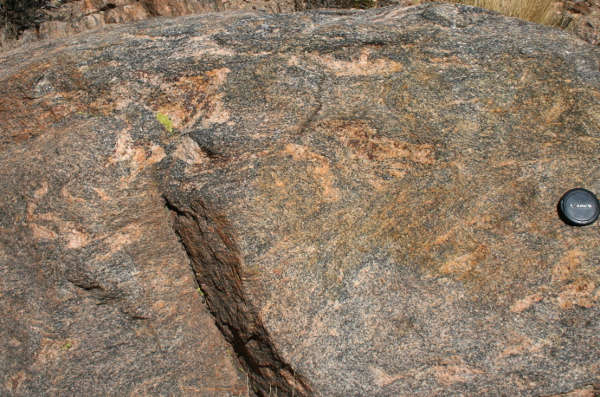
Fig. 2e. Folded Ovejeria granite with garnet-bearing leucosomes in fold hinges. SQ344 close to Puesto Quebrada, W to the right.
|
Ovejeria granite: diatexites. These are features suggestive of a close genetic link between psammites and the granite.
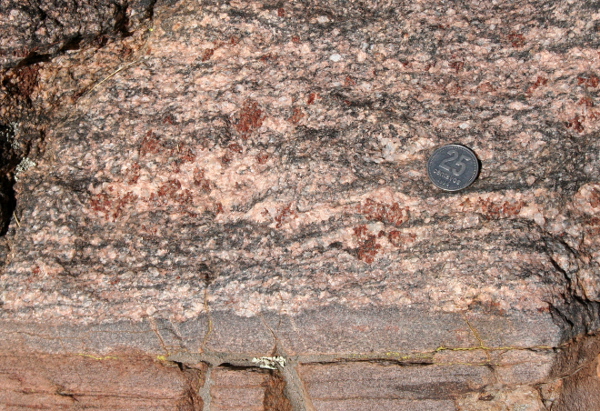
Fig. 3a. Sheared garnet neosome in Ovejeria granite close to contact with psammite block. Thrust to W (top-to-right) on L=096/15.
SQ345 close to Puesto Quebrada.
|
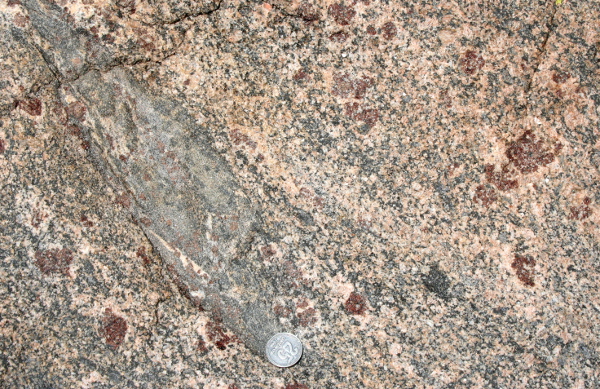
Fig. 3b. Ovejeria granite with garnet-bearing neosome and a schollen of psammite also with garnet leucosomes. SQ342 close to Puesto Quebrada
thrust to W recorded here on L plunging gently E or W.
|
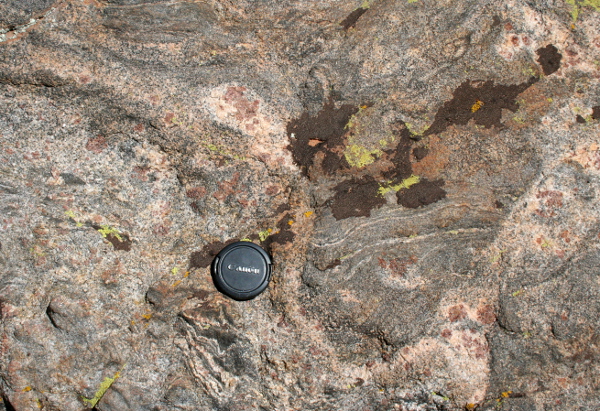
Fig. 3c. Ovejeria granite with garnet-bearing neosome surrounding a psammite schollen with similar garnet leucosomes.
SQ340 close to Puesto Quebrada.
|
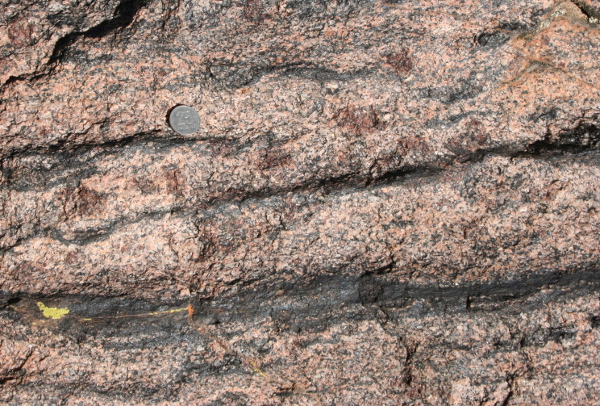
Fig. 3d. Ovejeria granite with garnet-bearing neosome and diggested, narrow bands of Bt-rich psammite and
schlieren. Large Gnts and leucosomes preferentially in granite bands. SQ345 close to Puesto Quebrada where thrust to W was recorded on L-096/15.
|
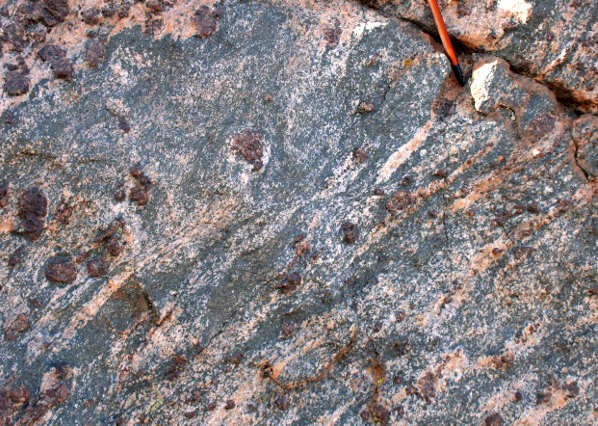
Fig. 3e. Migmatite psammite, with large garnets in leucosomes. SQ358 Puesto Aguas Calientes: block.
|
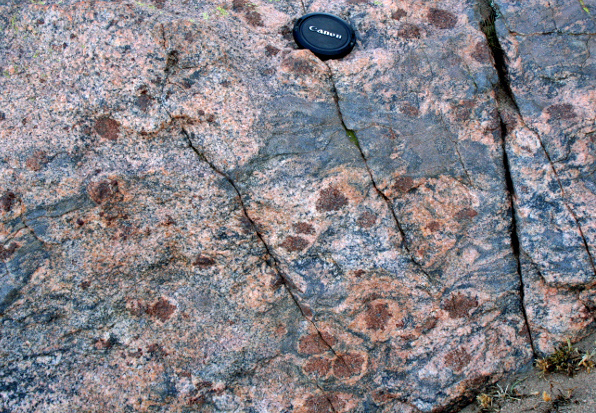
Fig. 3f. Psammite grades into a granite and garnet leucosomes are released into and disrupted by
the mobilization of the granite. Could this give rise to inherited source garnet leucosomes in the granite?
No, here the leucosome is destroyed by the granite, leaving inherited garnets in granite. SQ358 Puesto Aguas Calientes: block.
|
Psammite anatexis: source of Ovejeria granite or anatexis contemporaneous with anatexis of the Ovejeria granite? The issue here is that the syn-kinematic
anatectic features documented record the same deformation that is recorded by the Ovejeria granite in Fig. 2.
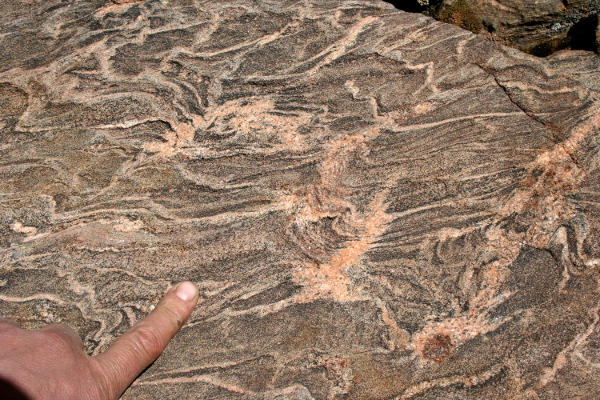
Fig. 4a. Migmatite looking parallel to lineation, with leucosome with garnets concentrated along the axial
plane of shear folds indicating thrusting to the west (stretching lineations plunging gently to 100 or 280). Interpretation: syn-kinematic melting. Puesto Quebrada.
|
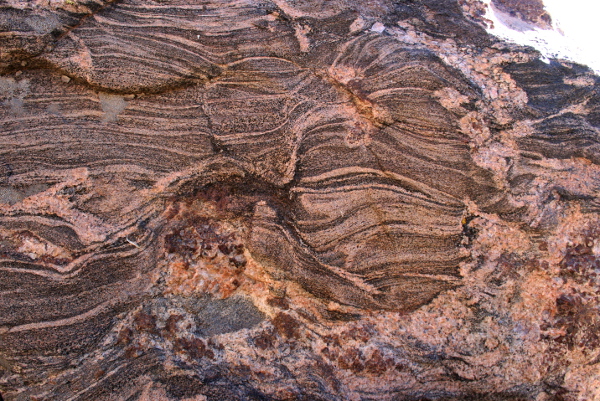
Fig. 4b. Migmatite looking down plunge of lineation with leucosome with garnets giving rise to stepping boudins.
Interpretation: syn-kinematic melting. Puesto Quebrada.
|
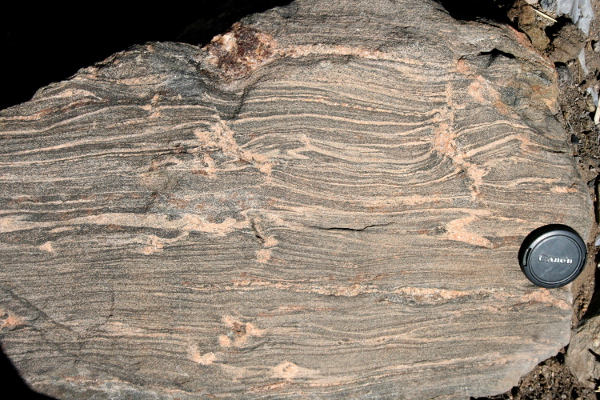
Fig. 4c. Migmatite looking down plunge of lineation with collapse structures and some leucosomes that
have an elliptical cross-section. Leucosome with garnets in collapse structures giving rise to boudins. Interpretation: syn-kinematic melting. Puesto Quebrada.
|
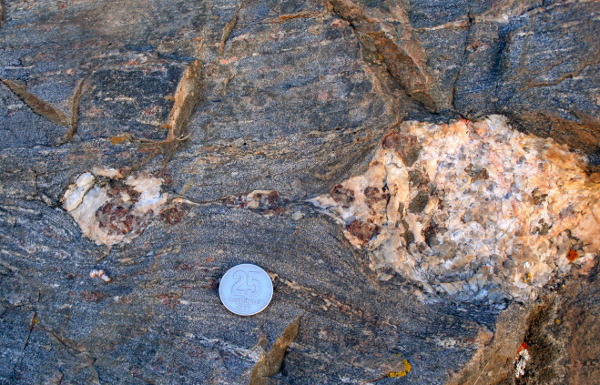
Fig. 5a. Garnet leucosome in sheared psammite. Notice rotation of garnet forming a Z inside the leucosome. Top-to-right shear sense.
|
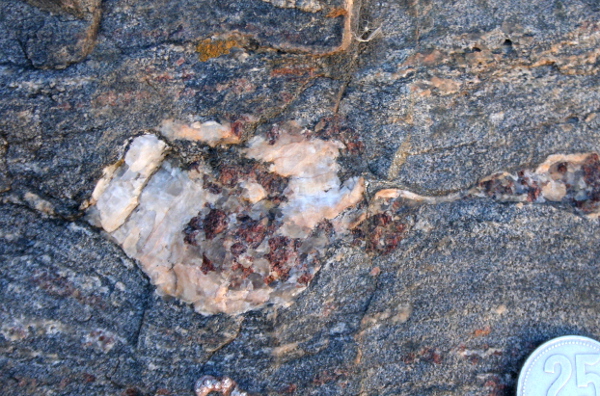
Fig. 5b. Detail of previous.
|